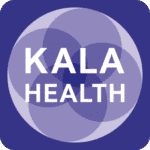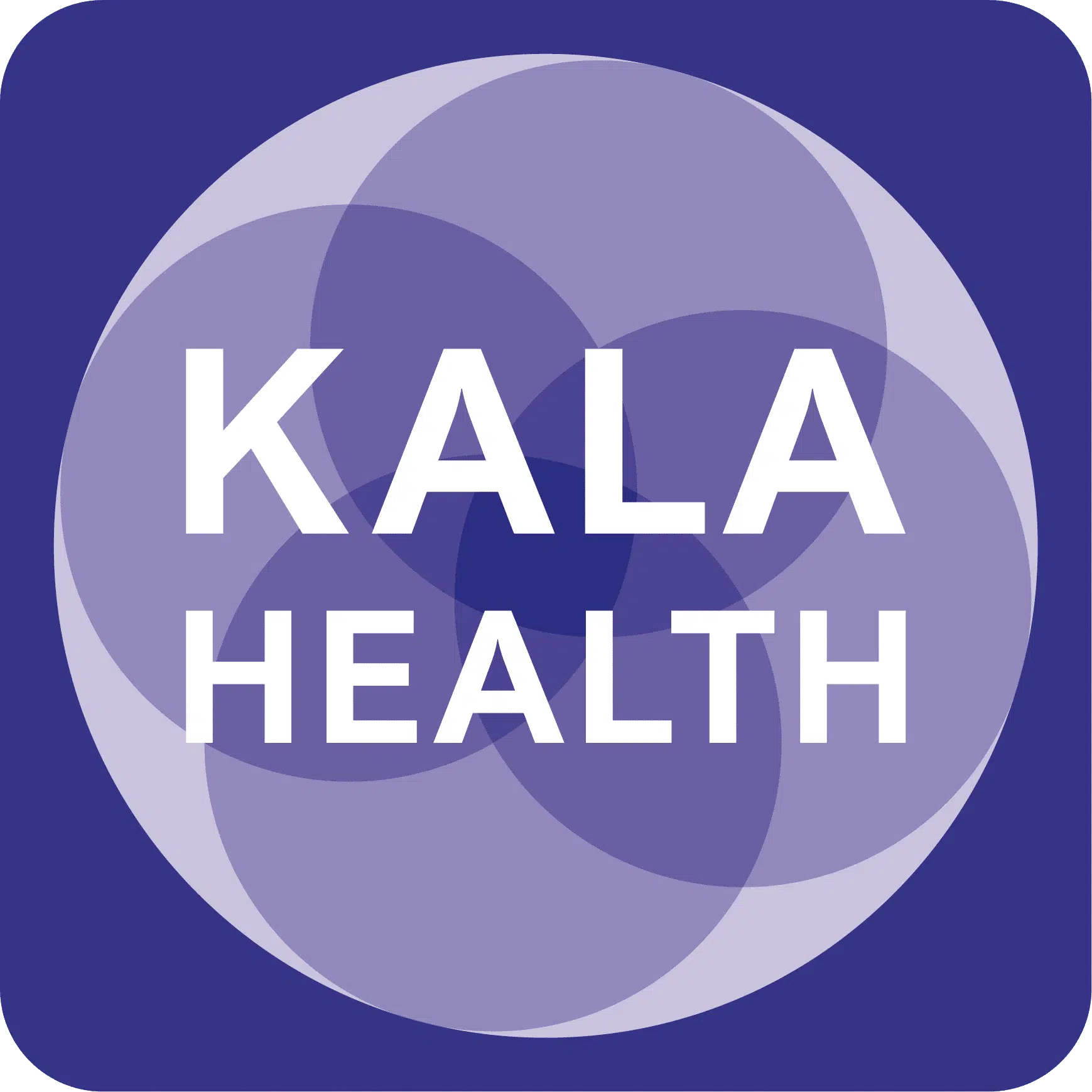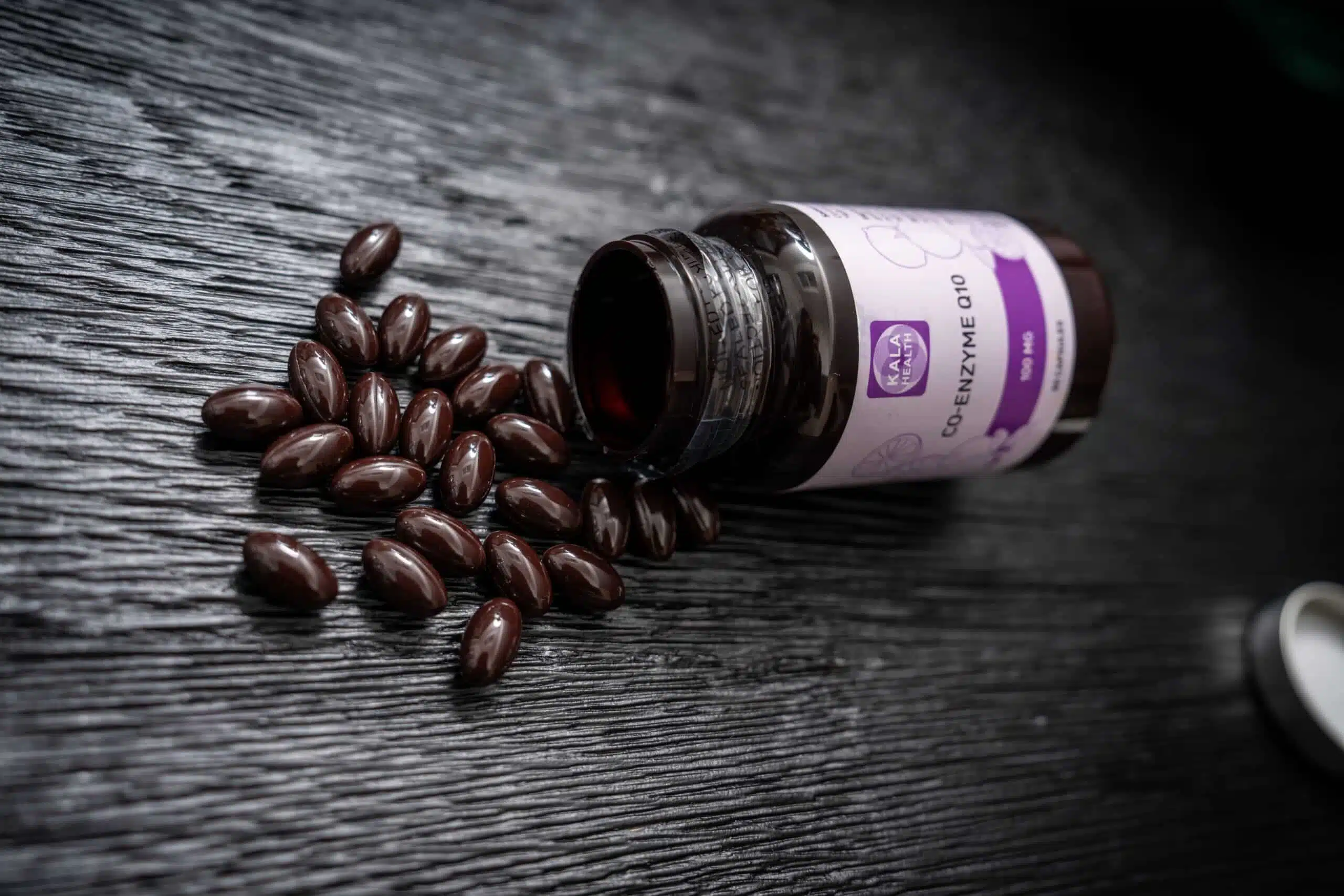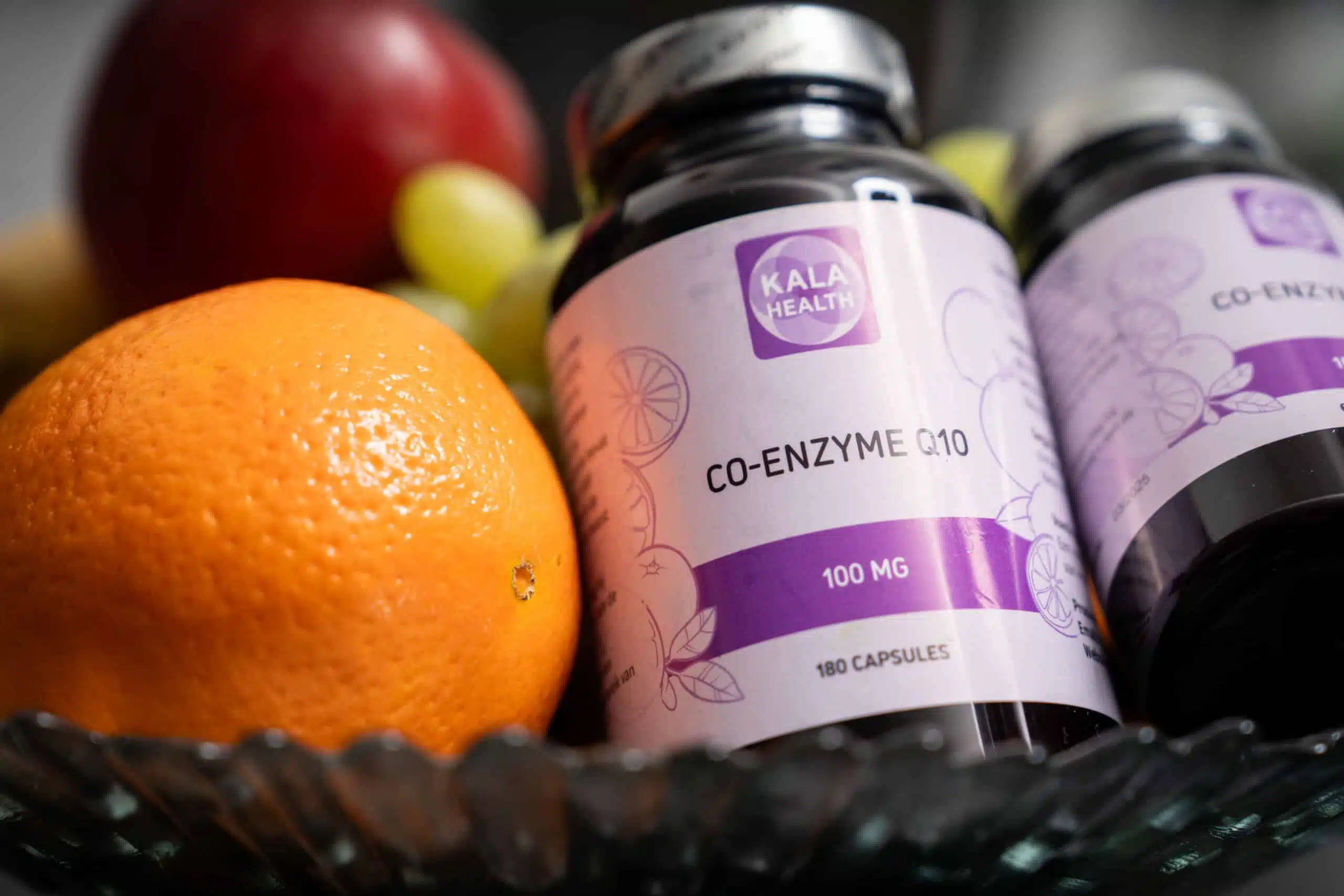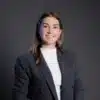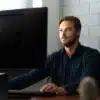Coenzyme Q10
Coenzyme Q10
- Production of Q10: From the age of 40, the production of Coenzyme Q10 in the body decreases
- Processes: Coenzyme Q10 is involved in various processes in the body
- High dose: Each softgel contains a total of 100mg of Coenzyme Q10. Taking 1 softgel daily with this dosage is sufficient
Description
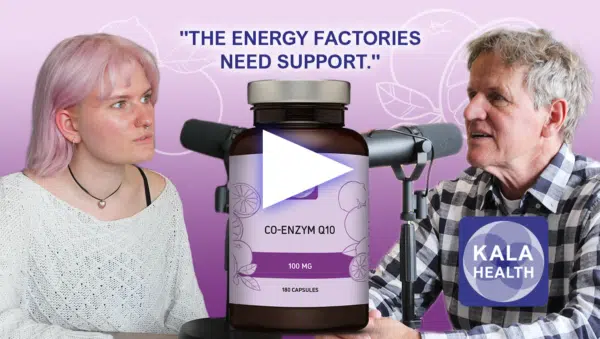
Coenzyme Q10 and Its Natural Sources
Coenzyme Q10, often abbreviated as CoQ10, is an essential enzyme that plays a crucial role in the body. It is a substance produced by the body itself and is found in all cells of the body, especially in the “energy factories” of the cells, known as mitochondria. Coenzyme Q10 is estimated to be involved in approximately 90% of all the energy generated by the body.
Fortunately, this coenzyme is present in various natural food sources, with the most significant ones including fatty fish like salmon and mackerel, as well as in nuts such as almonds and peanuts, and organ meats, particularly liver-derived meat. Coenzyme Q10 is also found in whole grains, soybeans, and various vegetables like spinach and broccoli. These food sources provide us with a natural way to ensure an adequate intake of Coenzyme Q10. With dietary supplements, we can complement our diet to replenish our Q10 levels, particularly in major muscles such as the heart since muscles are the primary consumers of energy.
Benefits of Coenzyme Q10 in Older Age
The majority of Coenzyme Q10 in our body is produced internally, and only a small portion comes from our diet. However, this natural production gradually declines as we age, typically starting around the age of 20. This means that the levels of Coenzyme Q10 in our body may become insufficient at a certain point.
When Coenzyme Q10 levels become inadequate, it may be beneficial to consider supplementing them with the help of dietary supplements. An example of such a supplement is our Coenzyme Q10 with a concentration of 100 mg. This can be an effective way to supplement the required amount of this coenzyme in situations where the natural production falls short.
Composition
Coenzyme Q10 from Kala Health contains the following ingredients:
Ingredients
| Composition per capsule | |
|---|---|
| Coenzyme Q10 | 100 mg |
Ingredients: Filling agent (non-GMO soybean oil), gelling agent (gelatin), Coenzyme Q10, humectant (glycerin, water), beeswax, colorant (iron oxide).
Guaranteed Free of: Preservatives, synthetic fragrances, colorants, and flavors.
Use & dosage
Recommended use
| For Who? | Daily Dosage |
|---|---|
| Adults: | 1 capsule per day |
Daily Dosage: Adults should take 1 capsule per day, or as recommended. It is preferable to take it during a meal. Please adhere to the (recommended) daily dosage.
Mandatory Statement: A dietary supplement is not a substitute for a varied diet. A diverse, balanced diet and a healthy lifestyle are important. This product is a dietary supplement (Coenzyme Q10).
Safety: Consult a specialist before using supplements in the case of pregnancy, lactation, medication usage, or illness.
Storage advice
Storage: Keep in a dry place at room temperature and out of the reach of small children.
Background information
What is Coenzyme Q10?
Coenzyme Q10, also known as CoQ10, is a potent, fat-soluble antioxidant. In addition, it plays a crucial role in delivering energy to our bodies, making it highly concentrated in our muscles and organs. Coenzyme Q10 is primarily found in the cell membranes of the heart, lungs, liver, kidneys, spleen, pancreas, and adrenal glands. It has the most significant impact in these tissues, notably by contributing to the electron transport chain. The electron transport chain leads to a series of reactions in the mitochondria of the cell, ultimately resulting in the production of energy in the form of ATP. Coenzyme Q10 also serves as an antioxidant with other roles for cells, although we won’t delve into these potential health effects. Nonetheless, we believe that the clinical relevance of Coenzyme Q10 is underestimated. Despite this, Coenzyme Q10 is one of the most commonly supplemented nutrients globally, a statistic that speaks for itself.
How is Coenzyme Q10 Absorbed and Transported by Our Body?
The key to supplementing Coenzyme Q10 lies in the formula of the supplement in which the enzyme is processed. The excipients in the Coenzyme Q10 supplement’s formula should assist in its absorption by the body. For consumers, it is essential that Coenzyme Q10 is well-processed in a formula with high bioavailability. In a formula with high bioavailability, the Coenzyme Q10 dosage remains low and affordable while still delivering the desired effect.
Coenzyme Q10 is a relatively large molecule and is absorbed by cells in the small intestine through a simple process called passive facilitated diffusion. After absorption, Coenzyme Q10 accumulates in the blood and becomes available to all cells in your body. When Coenzyme Q10 is taken up by cells through passive diffusion, there needs to be a higher concentration of Coenzyme Q10 in tissue fluid than inside the respective cell membrane for this process to occur efficiently.
Biological availability of Coenzyme Q10 indicates how much of this enzyme is available in your blood for your cells. While it reflects absorption, it is not the same as actual uptake by cells and should not be used as an exact measure for that purpose. However, it provides a good estimate of the amount of Coenzyme Q10 that your body can utilize, as it accumulates in cell membranes and cell organelles.
Specific Target Groups: Individuals Aged 40+ and Cholesterol-Lowering Medication Users
This product is particularly appealing to specific target groups, such as individuals over the age of 40. As we age, the natural production of Coenzyme Q10 in our bodies significantly declines, which can lead to a deficiency in this essential enzyme. Therefore, supplementing with Coenzyme Q10 can be a wise choice for those aged 40+ to maintain the necessary levels.
Another specific target group that can benefit greatly from this product is individuals using cholesterol-lowering medications. Many people take cholesterol-lowering medications without being aware that these medications can block the substance Coenzyme Q10. Blocking Coenzyme Q10 can lead to feelings of fatigue and even an increased risk of heart and vascular problems. For individuals using cholesterol-lowering medications, it is highly recommended to also take Coenzyme Q10. Furthermore, taking Coenzyme Q10 has a positive effect on cholesterol levels themselves.
Ubiquinone or Ubiquinol?
Coenzyme Q10 is also known as Ubiquinone and Ubiquinol. Both forms exist in the body and are essential for energy production. In the cellular energy factories (the mitochondria), nutrients (glucose) and oxygen are converted into energy through a chain of reactions. Both Ubiquinone and Ubiquinol play a part in this chain. Ubiquinone receives electrons from another molecule in the chain, converting it into Ubiquinol. Once it passes these electrons to another molecule in the chain, it reverts to Ubiquinone.
Ubiquinone
Ubiquinone has a role in the synthesis of energy (ATP) in the inner mitochondrial membrane. Coenzyme Q10, specifically Ubiquinone, acts as the mediator that stimulates the mitochondria to produce energy. This function is unique to Ubiquinone and cannot be replaced by any other molecule. Due to its role in energy production, Ubiquinone is actually involved in all body processes that require energy. Examples of such processes include energy production, active transport, membrane stabilization, nucleotide and enzyme synthesis, hormone secretion, neurotransmitter synthesis, muscle contraction, sperm production, heat regulation, and more. One could say that Ubiquinone influences all vital life processes within the human body.
Ubiquinol
Ubiquinol is an antioxidant throughout the body, found in cell membranes and cell organelles. Ubiquinol protects these cells from damage through its antioxidative function. Beyond cell membranes, Ubiquinol also plays an important antioxidative role by supporting the function of antioxidants such as vitamins E and C.
The Absorption of Ubiquinone and Ubiquinol
Ubiquinone is absorbed in the intestines and is then converted to Ubiquinol in cells, lymph vessels, or blood. This conversion makes sense because there is no need for energy production in lymph and blood circulation, but there is a need for Ubiquinol’s antioxidant protection. Conversely, Ubiquinone plays a crucial role in energy production within cells. Once it reaches the cell mitochondria, Ubiquinol is quickly converted back to Ubiquinone. This constant conversion of Ubiquinone to Ubiquinol and vice versa is known as the Q cycle. As mentioned, the body’s ability to produce and convert Ubiquinone to Ubiquinol (and vice versa) decreases with age and illness. Therefore, deficiencies in CoQ10 are likely to be common in an aging society.
The Functions of Both Forms of Coenzyme Q10
The strength of Coenzyme Q10 lies in its existence in two forms, each with essential functions. Ubiquinol and Ubiquinone can independently recycle and convert each other when needed. Without Ubiquinone, life is impossible, as the body cannot survive without energy. On the other hand, the life-sustaining feature of energy must be maintained and protected. Coenzyme Q10 can contribute to our body’s energy production throughout our lives, including through the antioxidative function of Ubiquinol. Antioxidants support our immune system and prevent toxic byproducts such as free radicals and oxides, which result from energy synthesis, from prematurely aging all cells and reducing the quality and length of life. Ubiquinone and Ubiquinol are redox pairs, where one can be quickly converted into the other depending on the specific functions required.
Conclusion on the Distinction between Ubiquinone and Ubiquinol
There is hardly any distinction between Ubiquinol and Ubiquinone: they are constantly interconverted and are equally essential for generating approximately 90% of the body’s energy, which is by far the most important function of Coenzyme Q10. The only difference is that Ubiquinol (due to the extra electrons it has bound) also functions as an antioxidant. However, this is also a disadvantage, as Ubiquinol is vulnerable to oxidation, making it more challenging to produce and more expensive as a dietary supplement.
In summary, the difference between Ubiquinol and Ubiquinone is much smaller than often portrayed. Both are equally necessary for generating energy in the body, and that is the most crucial function of Coenzyme Q10. The primary criterion should be that Coenzyme Q10 is well-absorbed, which is achieved through a suitable delivery form, dissolved in a plant-based oil in a softgel. A significant advantage of Ubiquinone is that it has been researched much more extensively, and it is much cheaper to produce.
